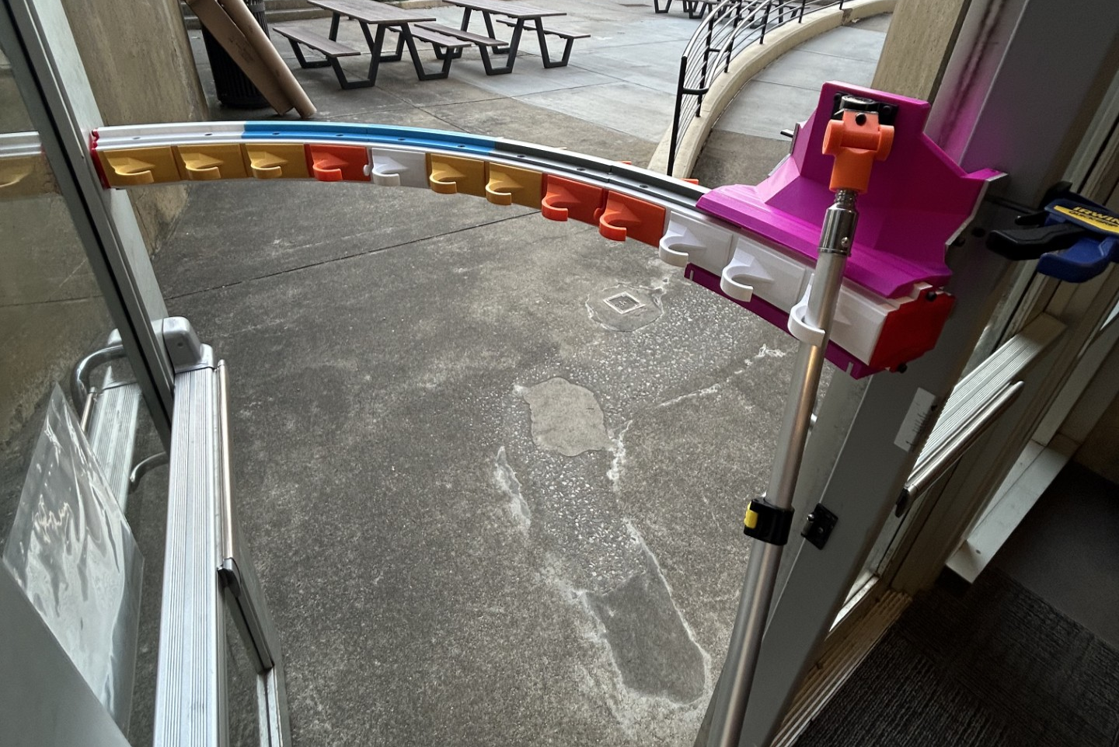
Portable Push Door Openers for Wheelchair Users
Situation
Wheelchair users struggle to open heavy push doors because they cannot leverage their full body weight or foot friction, and with only two hands, they must simultaneously push open the door and propel their independent wheels. Solutions exist to automatically open a door, but no devices exist to help a wheelchair user with a door that has no assistive technology installed.
Workflow
- First, our team defined the problem using a Functional Decomposition and 4-Box Chart that lists environmental factors, material requirements, required functions, and specifications.
- We conducted research on 25 biological mechanisms related to the required functions of the device, evaluating them based on how the function, environment, materials, size, and performance scale of the each compares to the door-opening problem.
- With the highest-ranking biological mechanisms, we translated them to the design problem to create three potential design concepts. With each concept, we conducted quantitative analysis to assess their feasibility and compare their expected performance.
- We designed, prototyped, and tested the most promising design concept inspired by plantar flexion in the human leg, which allows us to raise our body with a force smaller in magnitude than our weight, and the tendon locking system in bat feet, which allows them to sleep upside without expending energy.
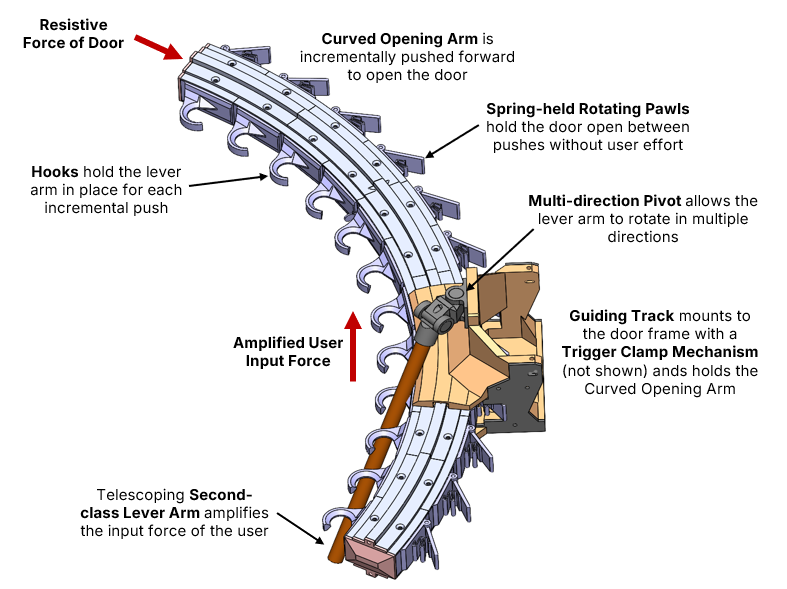
CAD assembly of the first iteration of the portable push door opener.
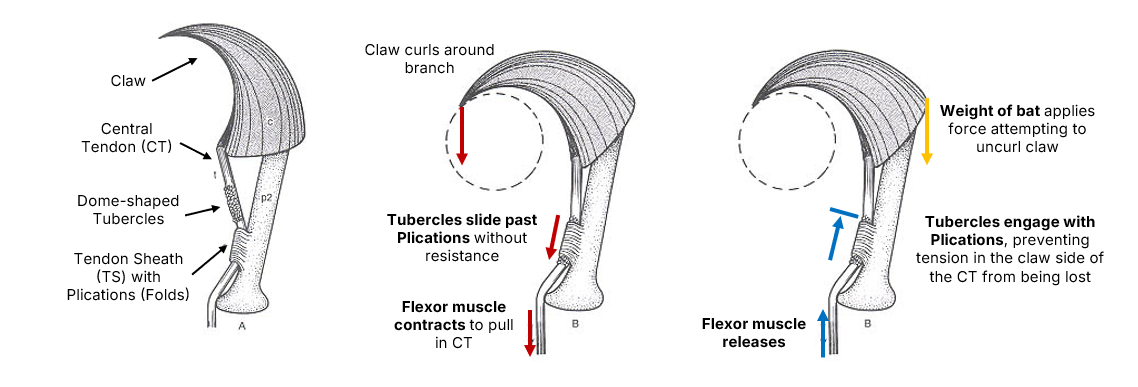
Illustrative explanation of the Tendon Locking Mechanism (TLS) found in bat feet that allow them to hang upside passively with little energy expenditure while they sleep.
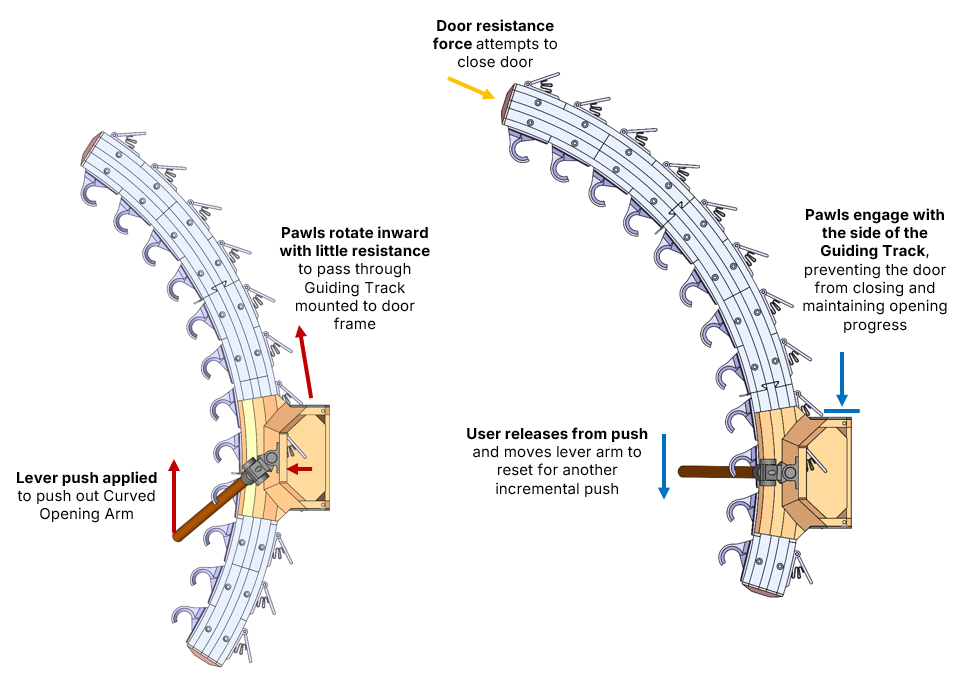
Diagram showing how the TLS mechanism in bat feet was translated to the design of the portable push door opener.
Progress
Our proof-of-concept proved the feasibility of the device which reduces the pushing force needed by a user by 50% and allows the user to remain in a stationary position as they door open with a series of smaller, incremental pushes. To create a finished product, friction can be reduced to further decrease the amount of force the user needs to apply. Design changes can be implemented to make the device smaller, collapsible, and more portable for wheelchair users.
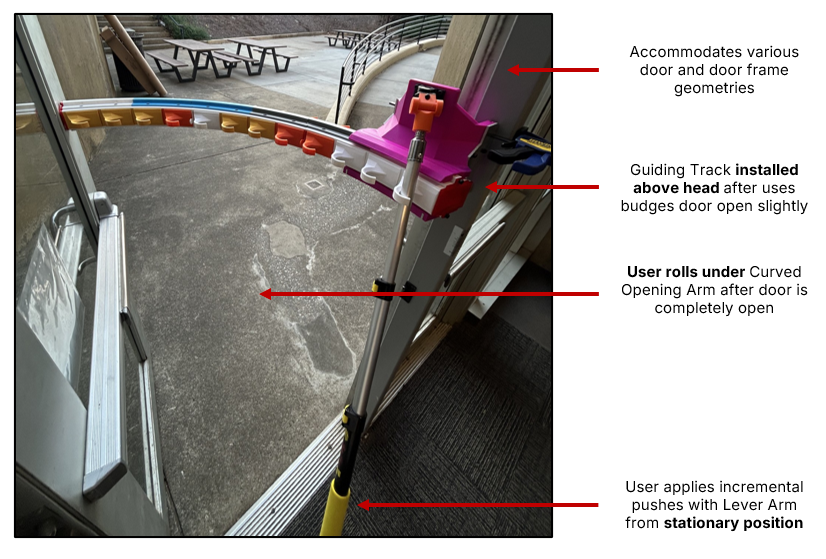
Proof-of-concept prototype of the portable push door opener.